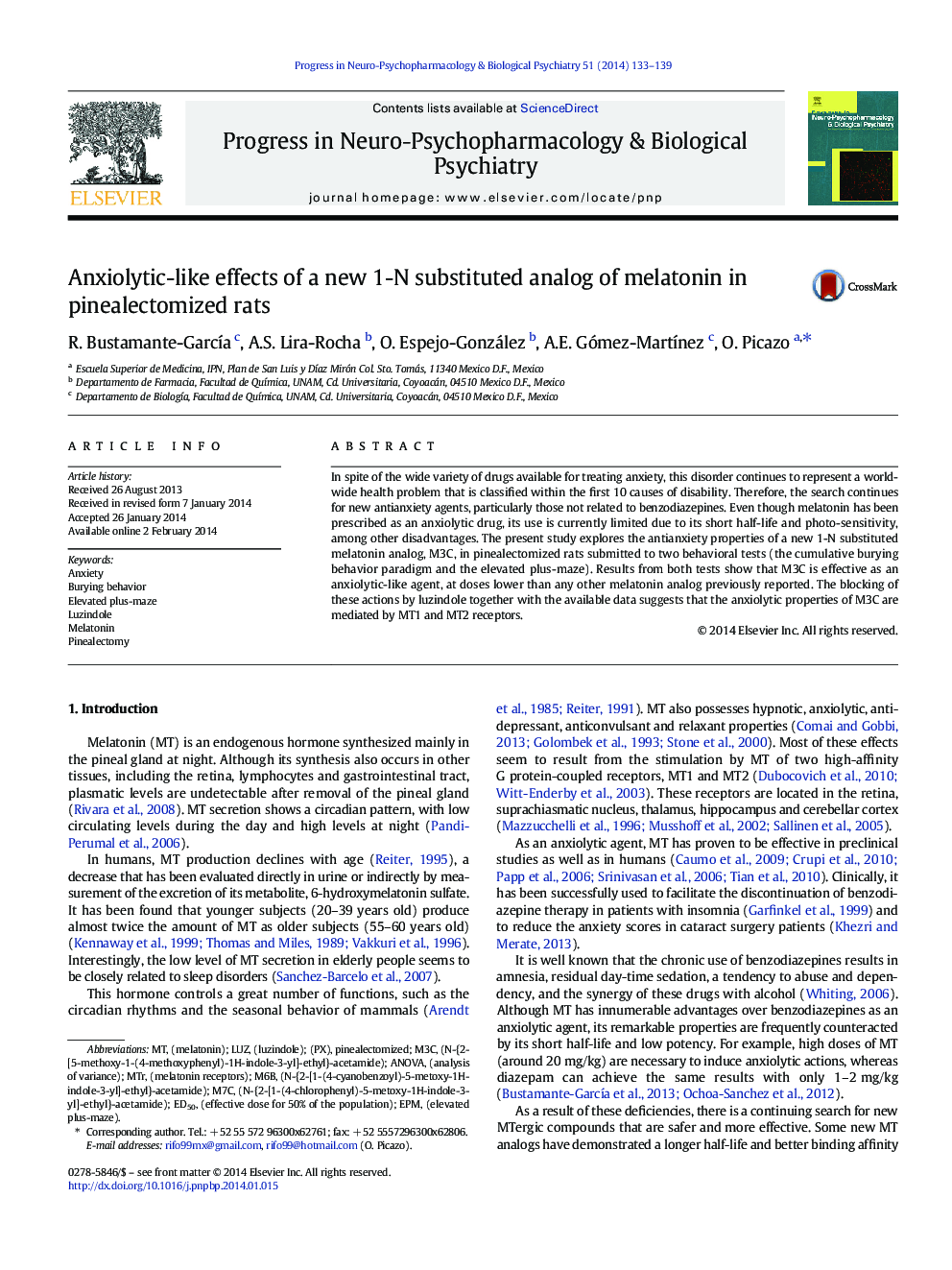| Article ID | Journal | Published Year | Pages | File Type |
|---|---|---|---|---|
| 2564851 | Progress in Neuro-Psychopharmacology and Biological Psychiatry | 2014 | 7 Pages |
•M3C is more potent than other melatoninergic compounds.•MT1 and MT2 receptors seem to be responsible for the anxiolytic action of M3C.•The burying behavior paradigm is more sensitive than EPM.•Pineal gland removal produces anxiogenic-like effects in the burying behavior test.•Luzindole fully blocks the antianxiety actions of M3C.
In spite of the wide variety of drugs available for treating anxiety, this disorder continues to represent a worldwide health problem that is classified within the first 10 causes of disability. Therefore, the search continues for new antianxiety agents, particularly those not related to benzodiazepines. Even though melatonin has been prescribed as an anxiolytic drug, its use is currently limited due to its short half-life and photo-sensitivity, among other disadvantages. The present study explores the antianxiety properties of a new 1-N substituted melatonin analog, M3C, in pinealectomized rats submitted to two behavioral tests (the cumulative burying behavior paradigm and the elevated plus-maze). Results from both tests show that M3C is effective as an anxiolytic-like agent, at doses lower than any other melatonin analog previously reported. The blocking of these actions by luzindole together with the available data suggests that the anxiolytic properties of M3C are mediated by MT1 and MT2 receptors.
